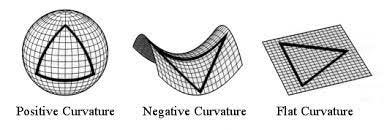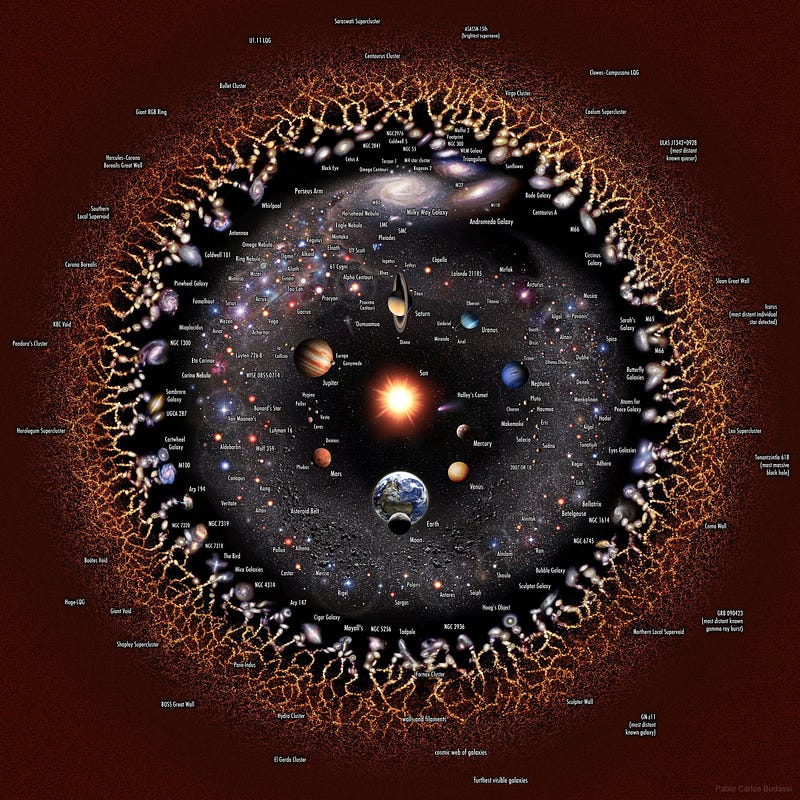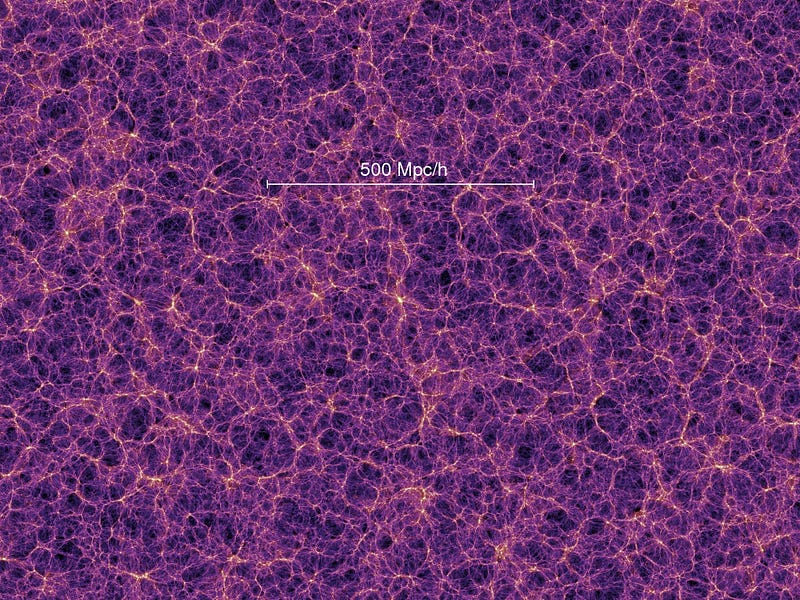Exploring the Mysteries Beyond Our Universe
Written on
Chapter 1: The Enigma of the Universe's Boundaries
The visible Universe is estimated to span approximately 93 to 94 billion light years in diameter, often depicted as a sphere. This visualization prompts a compelling question: what exists beyond this sphere? Let’s investigate this intriguing topic.

Currently, scientists have not reached a consensus on whether the Universe is infinite or has definitive boundaries. Nonetheless, several prominent theories can be explored. Based on extensive research, scientists propose that the Universe might either be infinite or exceedingly large. To differentiate between these possibilities, astronomers examine the curvature of space-time on a cosmic scale, which helps them determine the overall shape of our Universe—be it an infinite plane, a sphere, or a torus. For the Universe to be genuinely infinite, it must be geometrically flat, implying zero curvature.

Geometry of the Universe. Source: http://abyss.uoregon.edu
Observations indicate that the Universe is 99.6% flat, with the remaining 0.4% potentially attributed to measurement inaccuracies. However, this flatness does not necessarily imply infinity. For instance, the surface of a cylinder is geometrically flat, yet it possesses a finite volume. Thus, the Universe could be flat yet self-contained, having a limited size.
If such a scenario exists, what lies beyond this finite volume? This question ventures into the realm of theoretical physics. Should the Universe have boundaries, we may never gain insights into what exists beyond them. However, various mathematical theories have emerged to describe potential realities beyond our Universe.

One theory posits the existence of a "super" Universe beyond our own—a boundless expanse where our Universe could continue to expand indefinitely. Within this super Universe, there may be other universes akin to ours, located hundreds of billions of light years away.
This leads to an essential question: why can’t we observe these distant universes? The most plausible explanation is that their light may be so distant that, by the time it reaches Earth, it has lost significant energy due to the Universe’s expansion, rendering it undetectable. Alternatively, if our Universe is not eternal, it could perish before this light reaches us.

Another theory suggests that there exists a higher-dimensional space-time outside our expanding Universe, which influences its expansion. Given its higher dimensionality, this realm remains beyond our current perception and understanding.
Consequently, numerous theories exist regarding what might lie beyond our Universe, focusing on whether such limits exist. These theories generally converge on the idea that beyond these boundaries, there could either be a larger universe or a complete void, which is inherently indescribable due to the absence of space.
Despite the uncertainties surrounding the Universe's limits, we often encounter terms like “a galaxy found at the edge of the Universe.” What does this edge refer to?
We are actually referencing the edge of the observable universe, which is a sphere centered on the observer (in this case, Earth). The radius of this sphere corresponds to the duration light has taken to reach us since the Big Bang. The distance from Earth to the observable edge is roughly 13.7 billion light years; however, because the Universe has continued to expand during that time, the actual distance is about 46 to 47 billion light years.

Each point in the Universe possesses its own observable boundary. While we cannot see beyond this limit, cosmological principles suggest that the space beyond mirrors our own, containing similar stars and galaxies scattered throughout finite or infinite realms. Proponents of the closed Universe theory speculate that its volume may be relatively small, allowing for the possibility that light from our galaxy, as it appeared shortly after the Big Bang, has circled back to us through a closed Universe. However, this remains a speculative idea.
So, that concludes our exploration. Remember, don't step outside your Universe.
If you’d like to see more space-related articles, give us a clap!
Subscribe to our channel and feel free to ask questions, which I will address in future articles.
Chapter 2: Theories of the Universe's Edge
The first video delves into the intriguing question of what lies beyond the edge of the Universe, exploring potential insights and theories.
The second video discusses five theories about what may exist beyond our Universe, shedding light on the edge of the observable Universe.